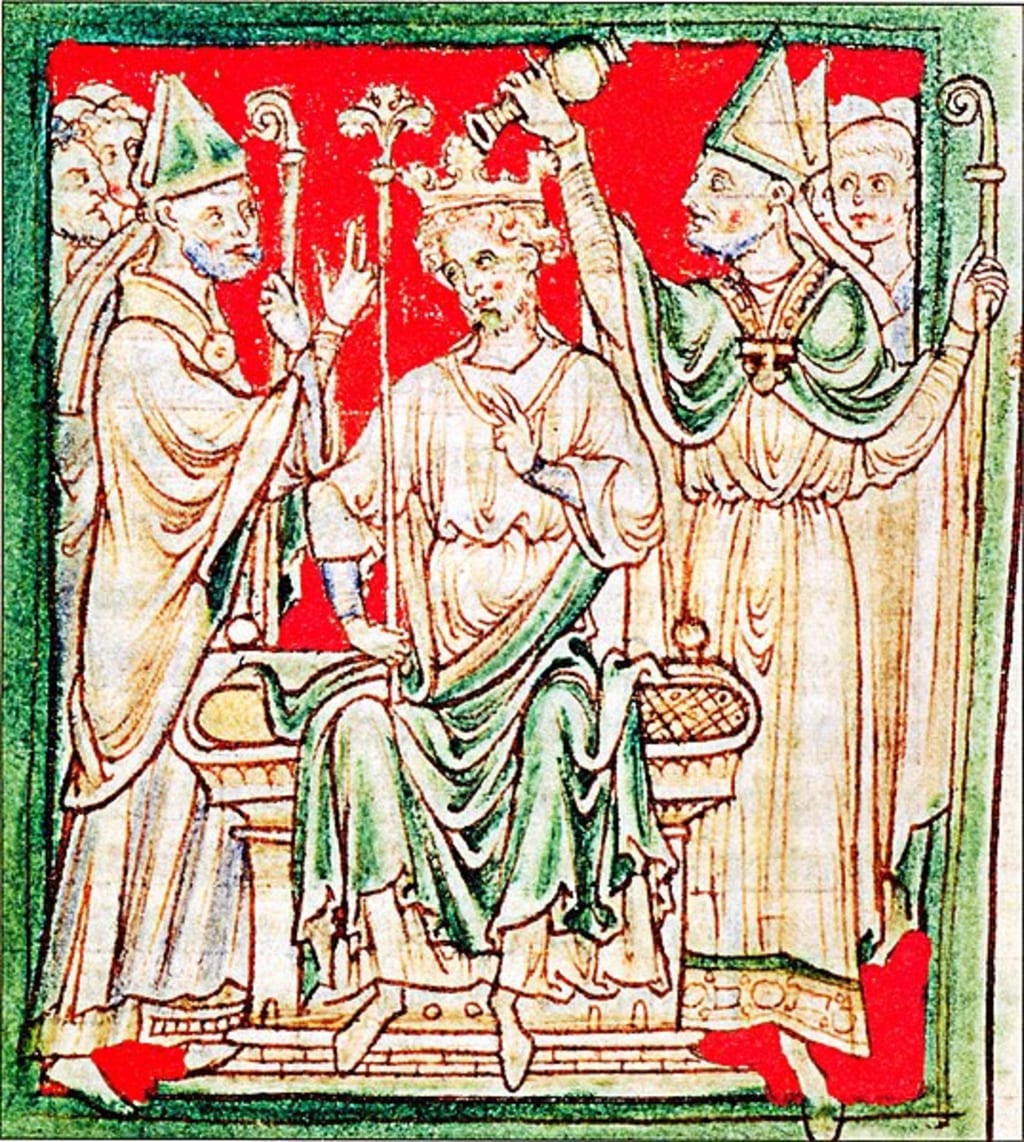The Truth About King Richard and His Devoted Minstrel
Separating fact from fantasy in the story of Blondel

King Richard I, also known as Richard the Lionheart, was one of England’s most popular monarchs, so it’s not surprising that much of what people write about him is absolute nonsense. He may or may not have been gay. The body of his father Henry II most assuredly did not begin to bleed when he approached it (indicating that Richard was his murderer). He was not best buddies with Robin Hood since Robin Hood probably never existed in the first place.
The legend of Blondel’s search for the missing king
One of the most beloved stories about King Richard involves the quest of his loyal minstrel Blondel to find the king after Richard disappeared on his way back from the Holy Land.

Blondel, it is said, traveled from castle to castle throughout Europe, singing the first verse of Richard’s favorite song until he heard the king answer with the second verse.
Blondel’s discovery of the king’s location facilitated Richard’s return to England to assume his rightful place as king, or so the story goes.
Was there a minstrel named Blondel?
The answer to that question is yes, but it’s complicated. Scholars have associated the name Blondel de Nestle with at least 24 courtly songs, but there were two Blondel de Nestles, father and son. It’s unclear which one wrote the songs, possibly both.
Blondel de Nesle (aka Jean I of Nestle) lived from 1155 to 1202 in the north of France. He was not only a contemporary of King Richard’s (1157–1199), he was just two years older and died three years after the king did. Blondel was a nickname given to many blond-haired men at the time. Like King Richard, this Blondel participated in the Third Crusade (1189–1192).
Blondel’s son (aka Jean II of Nestle) died in 1241. The son was married at the time of his father’s death, so he was old enough to have known King Richard, but he participated in the Fourth Crusade (1202–1204), not the Third.
There’s a fair bit of confusion about which Blondel wrote the songs attributed to Blondel de Nestle, and whether or not one or both of them knew King Richard. You can listen to one of Blondel’s greatest hits, “L’amours dont sui espris,” which roughly translates to “Love which I’m in love with,” here.
Richard’s disappearance on his way back from the Third Crusade
Dürnstein Castle in Austria (via blondebrunettetravel.com)
The Siege of Acre in the spring of 1191 resulted in a victory for the Christian forces. A triumphant Duke Leopold V of Austria raised his colors over the city alongside those of England, France, and the Kingdom of Jerusalem.
When Richard showed up, he denied Leopold equal status and removed Leopold’s colors. Leopold was furious and complained to Holy Roman Emperor Henry VI.
Leopold saw the opportunity to avenge his honor when Richard left the Holy Land in October of 1192. With the French ports closed, Richard had to take a route home that cut right through Leopold’s territory. Although traveling in disguise, Richard was recognized while stopping in Vienna and arrested.
Leopold imprisoned him in Dürnstein Castle in Austria. It was here, according to legend, that Blondel and Richard had their famous duet. Although Richard was indeed a prisoner at Dürnstein, it’s not true that no one in England knew where he was.
There would have been no need for Blondel, or anyone else to find him, let alone communicate with him in the “code” of using his favorite song. There was no plan to storm the castle and rescue the king.
England got him back the old-fashioned way; they paid for him. How much is a king’s ransom? In this case, it was 35,000 kilograms of silver. In today’s market, that would be equal to about $17.5 million: a king’s ransom indeed.
So it looks like the story of Blondel and Richard the Lionheart doesn’t have much basis in fact. It was part of a high-fictionalized account that appeared in 1260 called Récits d’un Ménestrel de Reims but was not well known at the time.
The story’s popularity got a boost in the late 18th century when it was repeated in the opera Richard Coeur-de-lion (1784) by André Ernest Modeste Grétry.
The only other clue as to whether or not Richard and Blondel were acquainted is a record that Richard granted a fief on the island of Guernsey to a vassal named Blondel.
Unfortunately, there is no indication as to whether the recipient of this Guernsey fief was the famous minstrel. The surname Blondel is common in Normandy and on the Channel Islands. It could have been any number of people.
But that’s the thing about a legend: it may distort the truth to produce a more fanciful version of reality, but it does make a great story.
About the Creator
Denise Shelton
Denise Shelton writes on a variety of topics and in several different genres. Frequent subjects include history, politics, and opinion. She gleefully writes poetry The New Yorker wouldn't dare publish.






Comments
There are no comments for this story
Be the first to respond and start the conversation.